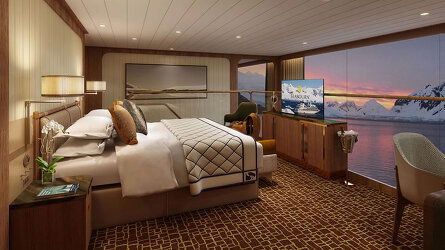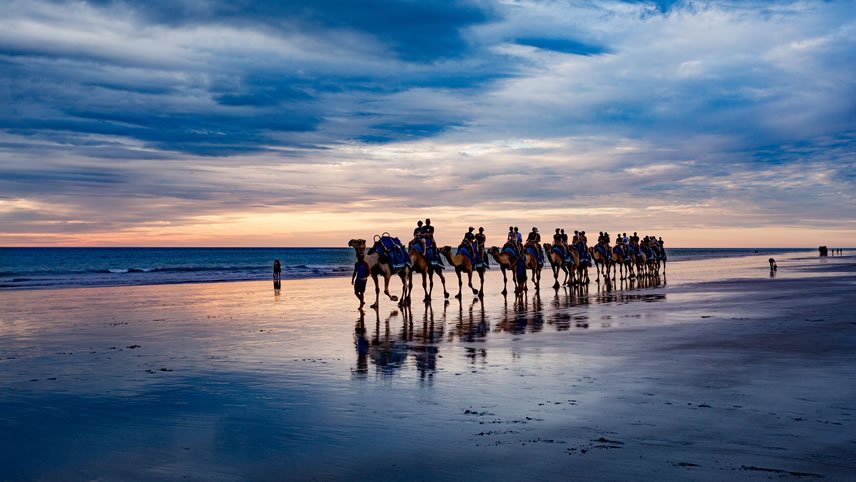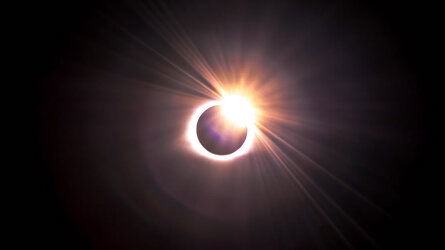Overview
Cruise Itinerary
A pearling town celebrated for its Indian Ocean sunsets and rugged beauty, Broome also serves as gateway to the grand wilderness of the Kimberley region. The town is surrounded by lush green mangroves and mudflats along Roebuck Bay, but the interior is dry and rugged. Ships dock at Broome cruise terminal.
Top Things to Do in Broome:
- visit Willie Creek Pearl Farm
- ride a camel on Cable Beach
- take a scenic flight over the Buccaneer Archipelago and the Horizontal Falls
- visit Gantheaume Point at low tide to see dinosaur footprints
This is one to cross off your bucket list. Yampi Sound and the magnificent Buccaneer Archipelago between King Sound and Collier Bay are jam-packed with natural wonders that will astound you. See beautiful clear blue waters and stunning Kimberley landscapes. Rich fish life including white-bellied sea eagles, brahminy kites, ospreys, common sandpipers and eastern reef egrets are an attraction for bottlenose dolphins that come to feed in the early mornings.
Talbot Bay, located in the remote Kimberley region of Western Australia, is famed for its stunning natural beauty and unique marine phenomena. The bay is best known for the Horizontal Falls, a natural wonder where powerful tidal currents create the illusion of waterfalls flowing horizontally. These tidal falls are a highlight for visitors, offering thrilling boat rides through the rushing waters.
Surrounded by rugged cliffs and pristine wilderness, Talbot Bay provides ample opportunities for adventure and exploration. The bay is home to diverse marine life, including turtles, sharks, and numerous fish species. Scenic flights over the bay offer breathtaking views of the dramatic landscape, showcasing the untouched beauty of one of Australia's most spectacular natural attractions.
Montgomery Reef, located off the Kimberley coast in Western Australia, is a remarkable natural phenomenon that covers over 300 square kilometres, making it one of the largest inshore reefs in the world. As the tide recedes, the reef dramatically emerges from the ocean, creating cascading waterfalls and revealing vast expanses of sea grass, marine life, and isolated lagoons.
This dynamic environment provides a unique opportunity for visitors to witness the reef's transformation and explore its rich biodiversity. The area is teeming with sea turtles, manta rays, and various species of sharks, offering an unparalleled marine experience. Montgomery Reef is not only a spectacular sight but also a vital habitat for wildlife, playing a crucial role in the local ecosystem.
Word count: 120
Freshwater Cove, located in the remote wilderness of the Kimberley region in Western Australia, is a hidden gem that offers stunning natural beauty and significant cultural heritage. This secluded spot is accessible primarily by sea, making it a popular destination for small ships exploring the Kimberley coast. The cove is renowned for its ancient rock art, created by the indigenous Worrorra people, which provides a fascinating glimpse into Australia’s ancient cultural history.
Visitors to Freshwater Cove can enjoy guided walks to view these remarkable rock art galleries, set against the backdrop of dramatic cliffs and lush vegetation. The area also offers excellent opportunities for birdwatching, with the untouched environment supporting a diverse range of wildlife.
Kuri Bay, situated on the remote northwestern coast of Western Australia, is a place of pristine and untouched wilderness. This secluded bay is renowned for its rugged, untouched beauty, where ancient red cliffs meet the turquoise waters of the Indian Ocean.
The bay's waters are rich in pearls, earning it a unique place in the world as a hub for the South Sea pearl industry. Its pearling history dates back to the late 19th century; today it is a remote outpost that offers a glimpse into this lustrous past, with the spectacular Kimberley region as its backdrop.
Hunter River in Western Australia’s remote Kimberley region offers an extraordinary blend of rugged beauty and rich wildlife. This secluded area, accessible mainly by sea, features towering sandstone cliffs and cascading waterfalls. The river's tranquil waters are perfect for leisurely cruises, providing opportunities to spot saltwater crocodiles and an array of bird species.
Explore the ancient Indigenous rock art sites that dot the landscape, offering a glimpse into the region’s deep cultural heritage. The surrounding wilderness is home to diverse flora and fauna, making guided bushwalks a must for nature enthusiasts. Hunter River promises a captivating experience, combining breathtaking scenery with fascinating wildlife and cultural insights.
Ashmore Reef, a remote coral atoll in the Timor Sea off the northwest coast of Australia, is a protected marine park renowned for its biodiversity and significance as a breeding ground for seabirds and marine life. This isolated reef complex comprises several sand cays surrounded by vibrant coral gardens that teem with an array of sea creatures including turtles, reef sharks, and countless species of tropical fish.
Access to Ashmore Reef is highly regulated to protect its delicate ecosystems, with visits typically by Zodiac excursion. Experience a unique opportunity to view the natural beauty and marine diversity of the reef without disturbing the habitat; a pristine example of marine conservation in action.
Jar Island is situated within Vansittart Bay and is famous for its outdoor art gallery of Gwion Gwion rock paintings, believed to be among the oldest in the world. These intricate artworks provide a fascinating glimpse into the region's ancient Indigenous culture, inviting visitors to contemplate the lives of those who lived here thousands of years ago.
The bay's landscape is characterized by dramatic red cliffs, sandy beaches, and clear turquoise waters, offering a serene environment for exploring by boat or on foot. The area is also a hotspot for spotting diverse wildlife, including sea turtles and numerous bird species, enhancing the sense of adventure for all who visit.
The King George River, located in the remote Kimberley region of Western Australia, is renowned for its dramatic landscapes and pristine wilderness. The river is famous for the towering King George Falls, one of Australia's tallest waterfalls, where twin cascades plunge 80 meters into a gorge. A boat tour or scenic flight offers breathtaking views of this natural spectacle.
The river’s untouched environment is home to diverse wildlife, including saltwater crocodiles and numerous bird species. Exploring the river by boat allows visitors to appreciate the stunning red sandstone cliffs and lush vegetation.
Australia's only tropical capital city, Darwin is rich in culture and ethnically diverse. While the Northern Territory boasts some of the most incredible wildlife on the planet, the city's museums celebrate the city's past and the galleries showcase the region's rich indigenous art. Ships will dock at Fort Hill Wharf.
Top Things to Do in Darwin:
- cruise the Darwin Harbour
- explore Litchfield or Kakadu National Park
- visit the Museum and Art Gallery of the Northern Territory
- take a Jumping Crocodile Cruise
- visit the Darwin Botanic Gardens
Australia's only tropical capital city, Darwin is rich in culture and ethnically diverse. While the Northern Territory boasts some of the most incredible wildlife on the planet, the city's museums celebrate the city's past and the galleries showcase the region's rich indigenous art. Ships will dock at Fort Hill Wharf.
Top Things to Do in Darwin:
- cruise the Darwin Harbour
- explore Litchfield or Kakadu National Park
- visit the Museum and Art Gallery of the Northern Territory
- take a Jumping Crocodile Cruise
- visit the Darwin Botanic Gardens
Life Onboard Seabourn Pursuit

Ultra luxury expedition cruising with all veranda suites and Seabourn's signature service. Read more

Be one of the privileged few by becoming a member of an exclusive circle who enjoy the highest standards of onboard service. Read more

Take your pick from eight complimentary dining venues along with complimentary fine wines and premium spirits. Read more

Five-star luxury resort at sea is exactly what you can expect in the Pursuit's guest suites. Read more

Discover what's under the sea by submarine, on top of the water by zodiac or kayak or on land by mountain bike. Read more

Enjoy a relaxing drink with a view from the highest indoor viewing point on the ship and catch up with likeminded travellers. Read more

Brochure

Seabourn Ultra-Luxury Cruises & Expeditions (2025-26)
Availability
 USD
Port charges, taxes and fees included.
USD
Port charges, taxes and fees included.
Tour & cruises prices are per person. Prices shown have savings applied, are subject to availability and may be withdrawn at any time without notice. Pricing and trip details are correct at this point in time, however are subject to confirmation at the time of booking and are subject to change by Seabourn. For cruise itineraries, cabin images are sourced from Seabourn. These should be treated as indicative only. Cabin inclusions, upholsteries and room layout may differ to the image(s) shown depending on the ship selected and your sailing dates.



















